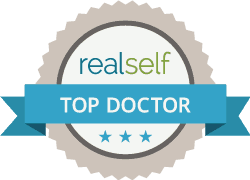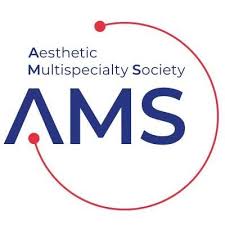
Microneedling, also known as collagen induction therapy, is a minimally invasive procedure that stimulates the skin’s natural regeneration mechanisms to improve texture, tone, and overall appearance. Medical microneedling in Kelowna, performed in a clinical setting using medical-grade devices, has become one of the most trusted treatments for reducing visible signs of aging and scarring. It is clinically backed, Health Canada and FDA-cleared, and has been shown to enhance the production of collagen and elastin, two essential proteins that contribute to healthy and youthful skin.
What is Medical Microneedling Treatment?
Medical microneedling, also known as skin needling or collagen induction therapy, involves the controlled creation of micro-injuries in the skin using a microneedling pen device equipped with sterile, single-use needles. These microchannels penetrate the epidermis and reach into the dermis, triggering the body’s natural wound-healing abilities. As a result, fibroblast activity increases, which in turn boosts collagen production. Over time, this leads to improved skin structure, firmness, and resilience.
Unlike cosmetic microneedling (such as derma rollers used at home), medical microneedling uses longer needles, typically ranging from 0.5 mm to 2.5 mm, and must be performed by a trained medical professional. This allows for deeper penetration and therapeutic efficacy, particularly for advanced skin concerns such as atrophic acne scars, deep wrinkles, uneven skin tone, and skin laxity. Medical microneedling is also used to treat acne scars, helping to minimize acne scar appearance through collagen remodeling and overall skin rejuvenation.
How Does Microneedling Therapy Treat Aging Skin?
Aging skin is characterized by a decrease in collagen, reduced skin cell turnover, and cumulative environmental damage. Fine lines, sagging, dull tone, and enlarged pores are all signs of intrinsic and extrinsic aging. Medical microneedling addresses these changes at the cellular and structural levels.
When microneedling stimulates the dermis, it prompts neocollagenesis (the formation of new collagen fibers) and neoelastogenesis (the formation of new elastin). These proteins help boost the skin’s plumpness, firmness, and elasticity. By increasing collagen density, microneedling smooths wrinkles and fine lines, tightens sagging areas such as the jawline or cheeks, and restores a more youthful texture to the skin.
Additionally, microneedling improves microcirculation and cellular communication in the dermal matrix. This enhanced environment facilitates the delivery of nutrients and cellular turnover, resulting in brighter and healthier skin.
How Do Microneedling Cosmetic Treatments Help Scars?
Scars, particularly atrophic scars (such as ice pick, boxcar, and rolling scars), can be difficult to treat due to the damage they cause to the underlying skin structures. These scars result from inflammation and collagen degradation during the healing phase of acne. Over time, this leaves behind depressions or irregularities in the skin.
Microneedling effectively remodels the dermal layer by promoting collagen synthesis in the depressed areas. The micro-injuries help break down old fibrotic scar tissue and replace it with newly organized collagen and elastin fibers. This process improves scar depth, texture, and color irregularities without removing layers of skin, as seen with ablative laser treatments.
After multiple microneedling sessions, spaced two to four weeks apart, patients with scarring notice a visible reduction in scar severity and a smoother overall skin tone. Combination therapies, such as microneedling with peptides and radiofrequency, can further enhance results.
Key Benefits of Medical Microneedling
1. Enhanced Collagen and Elastin Production
By stimulating fibroblast activity in the dermis, microneedling rebuilds collagen and elastin, restoring skin elasticity and volume lost due to aging or scarring.
2. Safe for All Skin Types
Unlike certain laser procedures, microneedling is safe for Fitzpatrick skin types I–VI. It does not rely on light or heat, reducing the risk of hyperpigmentation in melanin-rich skin.
3. Minimally Invasive with Low Downtime
Most patients experience redness and slight swelling for 24 to 48 hours, followed by minor flaking. There is no peeling or extended downtime as seen with chemical peels or ablative lasers.
4. Improves Skin Texture and Pore Size
Microneedling refines the skin, increases dermal volume, minimizing enlarged pores and smoothing uneven texture.
5. Reduces Fine Lines and Wrinkles
Repeated treatments gradually fade expression lines around the mouth, eyes, and forehead by reinforcing dermal thickness and reducing skin laxity.
6. Softens Scars
Microneedling is one of the few treatments that can visibly reduce atrophic scars through targeted collagen remodeling, with minimal risk of adverse effects.
7. Increases Product Absorption
The microchannels created during microneedling significantly increase transdermal absorption. This makes it ideal for pairing with medical-grade serums, growth factors, and PRP.
8. Long-Term Results with Cumulative Improvements
Microneedling offers gradual, natural-looking results that continue to improve with each session as new collagen matures.
What to Expect During the Microneedling Procedure
Before the procedure, the skin is cleansed thoroughly, and a topical numbing cream is applied for maximum comfort. The microneedling device is then moved across the skin’s surface in multiple passes, with the depth adjusted based on treatment areas, with shallower depths for regions such as under the eyes, and deeper depths for thicker areas or scars.
Treatment typically takes 30 to 60 minutes to complete, depending on the size of the area. Post-treatment, patients may experience mild redness. These effects resolve within 24 to 48 hours. Most patients return to normal activities the day after surgery, although sun protection is essential during the healing process.
How Many Microneedling Treatments Are Needed?
For optimal results, a series of treatments is recommended. Most providers suggest:
- Four treatments for anti-aging
- Four to six treatments for acne scars or advanced skin laxity
- Treatments spaced two to four weeks apart to allow full dermal healing and collagen maturation
Many patients continue maintenance sessions three to four times per year to preserve results and prevent further collagen loss over time.
Who is a Good Candidate for Collagen Induction Therapy?
Medical microneedling is ideal for adults in good overall health who are seeking non-surgical solutions for aging skin, scars, and textural irregularities. It is especially beneficial for individuals with early signs of aging, such as fine lines, enlarged pores, and mild skin laxity, as well as those with atrophic acne scars. Because it does not rely on light or heat, microneedling is safe for all skin types, including darker skin tones that may be more prone to hyperpigmentation with laser treatments. It is also an ideal option for patients who prefer gradual, natural-looking results or who wish to enhance the effectiveness of topical products. However, it may not be appropriate for individuals with active acne, eczema, rosacea, open wounds, or those who are pregnant or on certain medications. A consultation is necessary to determine candidacy and customize a treatment plan.
Medical Microneedling in Kelowna BC
Looking to have glowing, healthy, and youthful skin? Call our Kelowna medical aesthetics clinic on (778)760-5050 to schedule your medical microneedling treatment in Kelowna today.






















